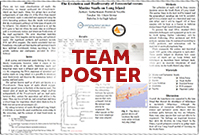

- Program:
- Barcode Long Island
- Year:
- 2017-18
- Research Topic:
- Wildlife
- Taxonomic Group Studied:
- Animals: Invertebrate
Project:
Biodiversity of Moths on Long Island
- Students:
- Ryan Marrone, Ian Watral, Matt Ficken
- School:
- Babylon Jr/Sr High School, Suffolk
- Mentors:
- Andrew Sheltz
Abstract:
Moths are winged insects that are mostly active at night. They help with pollination and also serve as a food source for larger animals, such as birds and bats. This project hopes to use DNA barcoding to determine genetic differences between small similar looking species of moths. Without the use of DNA, barcoding and PCR this would be incredibly difficult, if not impossible. Moths will be collected from various locations around Babylon. These moths will then be stored in individual zip lock bags until the barcoding process can begin. Once the samples are ready to be barcoded, the class will travel to an open lab hosted by Cold Spring Harbor Laboratory. The first step in the barcoding process is to take a small piece if a sample and add it to a microcentrifuge tube with lysis buffer and use a pestle to grind it up. The samples will then be centrifuged. Throughout this experiment the supernatant will be constantly pipetted in and out of the tubes, with various different substances being

